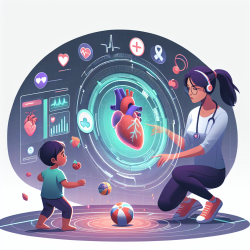Introduction
In the dynamic field of speech-language pathology, understanding the intricate workings of the brain is crucial for developing effective therapeutic interventions. The research article "Brain rhythms and neural syntax: implications for efficient coding of cognitive content and neuropsychiatric disease" by Buzsáki and Watson provides valuable insights into the role of brain rhythms in cognitive processes and their potential applications in therapy.
The Science Behind Brain Rhythms
Brain rhythms, or neural oscillations, are fundamental to the brain's ability to process information. These oscillations occur at various frequencies and are involved in numerous cognitive functions. The research highlights how these rhythms help in organizing neuronal activity into coherent patterns, which are essential for efficient information processing.
Implications for Speech-Language Pathology
For practitioners in speech-language pathology, understanding brain rhythms can enhance therapeutic outcomes. By leveraging the natural oscillatory patterns of the brain, therapists can design interventions that align with the brain's intrinsic coding mechanisms. This alignment can lead to more effective communication strategies and improved language acquisition in children.
Data-Driven Approaches
Incorporating data-driven approaches into therapy involves using evidence-based practices that are informed by research findings. The study of brain rhythms provides a framework for developing such practices. By analyzing the specific oscillatory patterns associated with language processing, therapists can tailor interventions to the individual needs of each child, thereby optimizing therapy outcomes.
Encouraging Further Research
The findings from this research also open avenues for further exploration. Practitioners are encouraged to delve deeper into the study of brain rhythms and their implications for speech-language pathology. By staying informed about the latest research, therapists can continuously refine their methods and contribute to the advancement of the field.
Conclusion
Understanding and harnessing brain rhythms can revolutionize the way speech-language pathologists approach therapy. By aligning interventions with the brain's natural coding mechanisms, practitioners can enhance communication outcomes for children. To read the original research paper, please follow this link: Brain rhythms and neural syntax: implications for efficient coding of cognitive content and neuropsychiatric disease.










